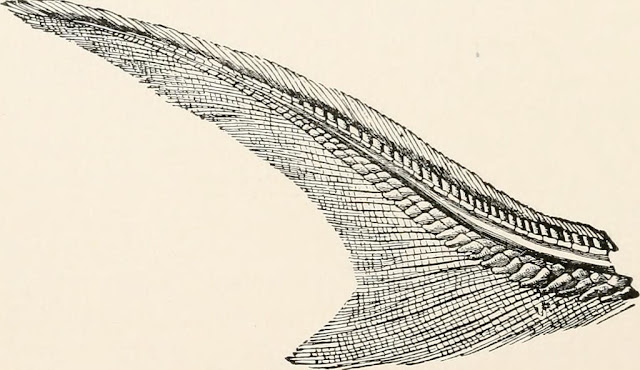The fins are usually the most distinctive anatomical
characteristics of a fish. They are composed of bone spines or rays that
protrude from the body with the skin that covers them and joins them, either in
a webbed form, as seen in most bonefish, or similar to a fin, as seen in
sharks. In addition to the tail or caudal fin, the fins of the fish have no
direct connection to the spine and are only supported by the muscles. Its main
function is to help the fish to swim.
The fins located in different places of the fish serve
different purposes, such as moving forward, turning, maintaining a vertical
position or stopping. Most fish use fins when they swim, flying fish use
pectoral fins to slide and frogfish use them to crawl. The fins can also be
used for other purposes; male sharks and mosquito fish use a modified fin to
release sperm, fox sharks use their caudal fin to stun prey, reef stonefish
have spines on their dorsal fins that inject venom, monkfish use the first spine
of its dorsal fin like a fishing rod to attract prey, and triggerfish prevent
predators by squeezing into the cracks of corals and using thorns on their fins
to lock in place.
CAUDAL FINS
The caudal fin, or tail, of a fish, is the only fin that
connects to the spine. It is the main means of locomotion for most fish. Unlike
many marine mammals with tails that use an upward and downward movement, fish
generally use a thrust from side to side of their caudal fin for propulsion.
The shape of the caudal fin can be indicative of the movement style of a fish.
For example, fish that swim very fast, such as tunas, have semilunar caudal
fins for more efficient swimming, while lurking predators such as grouper have
a strong and wide tail base, the caudal peduncle, for acceleration faster.
Caudal fin is well
developed in most of the fishes because it is an important contributor to
forward propulsion during swimming. Three main types of the caudal fin are found
i.e. Diphycercal, Hetrocercal, Homoceracal.
 |
| TYPES OF CAUDAL FIN |
The types of the Caudal fins are as follows
Diphycercal caudal fin
Heterocercal caudal fin
Homocercal caudal fin
Diphycercal caudal fin
Most primitive kind of tails or caudal fin was not exhibited by living fishes. The vertebral column extends straight back to the tip of the tail and
dividing the fin into two equal lobes. The upper lobes are known as Epidermal lobe
and the lowermost lobe is known as the Hypodermal lobe. Diphycercal caudal fin
occurs in modern cyclostomes, primitive
sharks, lungfishes.
Heterocercal caudal fin
 |
| HETEROCERCAL CAUDAL FIN |
It is the intermediate type, in which vertebral column
bends upwards and reaches up to the tip of the more prominent dorsal lobed thus
making caudal fin strongly asymmetrical. It is typical of modern
Elasmobranchs. Heterocercal caudal fins are characteristics of bottom
feeders, with ventral mouth and without swimbladder
Homocercal caudal fin
 |
| HOMOCERCAL CAUDAL FIN |
This is the advance and most common type characteristics of
the majority of higher bony fishes.
It is externally symmetrical but internally it is asymmetrical the vertebral column is short and
asymmetrical. The homocercal caudal fin is the characteristics of fishes with a
terminal mouth.








No comments
Please do not enter any spam link in the comment box